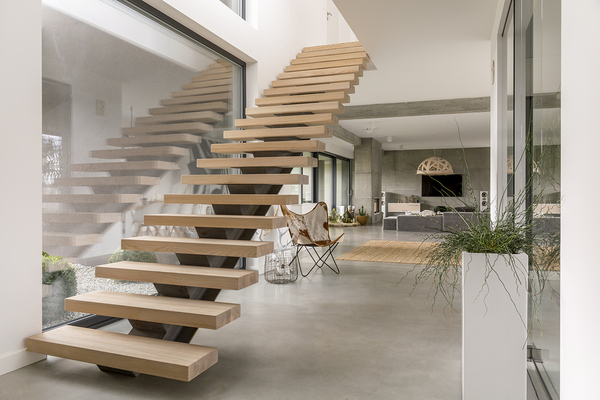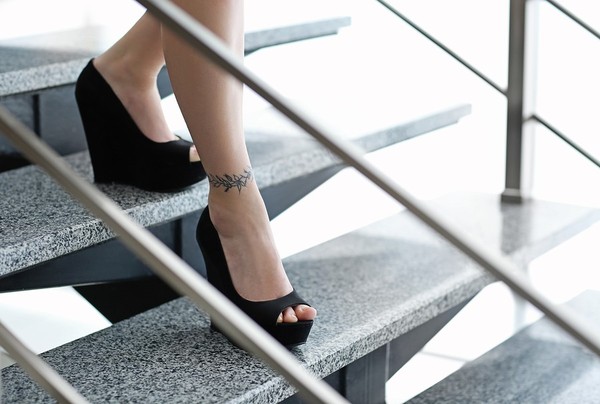
These stairs are modern-looking but dangerous with no handrail on either side.
Homes can be fraught with dangers of all kinds, and one of the biggest is stairways. The National Safety Council says falls are one of the top three causes of preventable, injury-related deaths.
Among the things homeowners can do to cut down on injuries in the home is to make stairs safer.
What can you do as a home inspector to help ensure the safety of stairs in homes?
- Check to see that adequate railings are installed. Railings are the single most important safety feature of a stairway. Most indoor staircases have railings, but many times outdoor stairs do not, especially if there are only two or three steps.This, however, is often where accidents occur. The National Institutes of Health says that many falls down stairs involve the elderly or intoxicated people. Those whose footing is unsure can greatly benefit from a railing to grasp.Code will differ from city to city and state to state, but Inspectapedia says railings are often required to be a certain number of inches from the stairs, and the rail must be thin enough to grasp. There also may be rules about how far from the wall the rail can be, and in some instances, the railing must be attached to the wall at the ends.
- Measure the stair treads and risers. ASHI says treads must be at least 11 inches deep and risers cannot be higher than 7 inches.If the treads are too narrow, it is difficult for climbers to fit the majority of their foot on the stair, and they risk a fall. This is especially precarious for people wearing heels, as the heel may not fit onto the stair.If the risers are too high, it may be difficult or awkward to climb up to the next stair.

- Are the stairs slippery? Slippery stairs may be a popular Japanese game show, but slick stairs in a home are no laughing matter.Wooden stairs can be slippery. One fix is adhesive grip strips, but many homeowners don’t want to affix this sticky tape to their wood stairs. Another solution for slippery wooden stairs is to install carpeting. But carpeted stairs can be slippery too. In these cases, grip strips can usually be applied safely.
- Check the lighting. Lighting on stairs should be adequate. Ascending or descending stairs in the dark adds to the risk of a fall. For this reason, both the bottom and top of the stairs should be equipped with wall switches, and they should be illuminated so they are easy to find in the dark.

This staircase might be beautiful, but it’s poorly lit and the handrails aren’t easy to grip.
Not all of these suggestions are required in the standards of practice, but these checks are easy to perform and your findings may end up meaning a lot to your clients.
Getting your home inspector training at ICA School prepares you to safely and thoroughly check all home systems. Our convenient online inspector training course teaches you everything you need to know about starting and running a successful home inspector business. Check out our classes; get a demo today.
The post Stairway Safety: 4 Ways Home Inspectors Can Help appeared first on Home Inspection Training & Certification Online.
